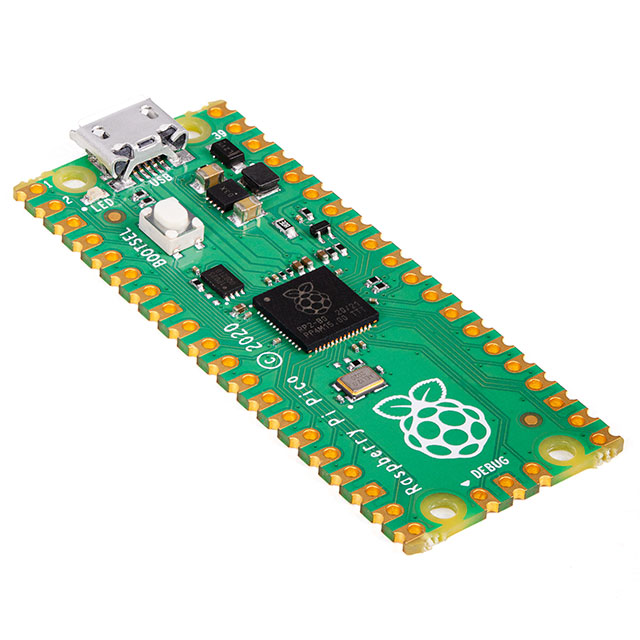Raspberry Pi Launches Pico Board Featuring Their Own Silicon
2021-01-21 | By Nate_Larson
Since the launch of the original Raspberry Pi Model B back in 2012, millions of these low-cost single board computers have found purpose out in the world, proliferating into education, industry, and the homes of nearly every maker and hacker. We’ve seen several revisions to the Raspberry Pi boards over the years with increases in processing power and memory, smaller form-factors, modules for end-use integration, and integration into a compact keyboard. Now, less than a month shy of nine years into their hardware journey, the folks at Raspberry Pi have begun a new foray into microcontroller design.
Available today, the Raspberry Pi Pico development board features the RP2040 microcontroller, a dual-core ARM Cortex-M0+ designed in-house by Raspberry Pi and runs at up to 133 MHz. The RP2040 is supported with both C/C++ and MicroPython cross-platform development environments, including easy access to runtime debugging. It has native UF2 boot and floating-point routines, and the built-in USB can act as both device and host. The chip has 256KB RAM and 16KB ROM, and can use external flash, allowing users to customize memory as needed.
![]()
The Pico board combines the RP2040 with 2MB of onboard QSPI Flash for code and data storage on a breadboard friendly 2.01 x 0.83 inch (21 x 51 mm) board with dual 20-pin 0.1” (2.54 mm) pitch through hole header pads. The board does not come with headers, so whether you need male or female headers, be sure to add these to your cart before checkout.
![]()
![]()
Additionally, all components are mounted on the top side of the board and the PCB has castellated edges, so if your project requires surface mounting, the Pico can easily accommodate this as well. There are 26 3.3 V GPIO broken out to these headers with three pins that are ADC capable and a micro-USB port for programming and power. Opposite the USB connector you will find the 3-pin ARM Serial Wire Debug (SWD) port.
![]()
Of course, with this being a Raspberry Pi product, you can be assured that documentation is abundant. To accompany the release, there is the Get Started with MicroPython on Raspberry Pi Pico book available as a paperback or download for students and beginners, which includes several example circuits.
![]()
And for those more seasoned with microcontrollers, you will find board and MCU datasheets, getting started guides, design guides, programming guides, design files, and more on the landing page here:
https://datasheets.raspberrypi.org/pico/getting_started_with_pico.pdf.
![]()
Find additional documentation below and order your Raspberry Pi Pico board today by going here:
https://www.digikey.com/en/product-highlight/r/raspberry-pi/raspberry-pi-picoboard
RP2040 datasheet: https://datasheets.raspberrypi.org/rp2040/rp2040_datasheet.pdf
RP2040 design guide: https://datasheets.raspberrypi.org/rp2040/hardware_design_with_rp2040.pdf
Pico board datasheet: https://datasheets.raspberrypi.org/pico/pico_datasheet.pdf
Getting started with the Raspberry Pi Pico: https://datasheets.raspberrypi.org/pico/getting_started_with_pico.pdf
Pico C/C++ SDK: https://datasheets.raspberrypi.org/pico/sdk/pico_c_sdk.pdf
Pico MicroPython SDK: https://datasheets.raspberrypi.org/pico/sdk/pico_python_sdk.pdf









